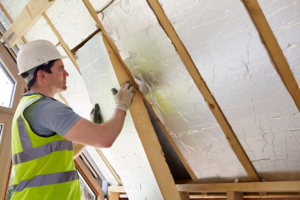Estate sales are conducted to liquidate a home’s belongings and are largely organized by professional companies. They often feature a diverse collection of items, including antique furnishings, tools and everyday household goods.
Educating yourself about how these events work can enhance your purchasing experience and maximize profit. Understanding common misconceptions about estate sales can also help you make the best decisions. Contact Estate Auctions Springfield, MO now!

Estate auctions provide a unique opportunity to buy high-value items at a discounted price. They are also the preferred method of liquidation for individuals facing challenging financial situations. These circumstances may include unexpected expenses, a major life event or relocating to a new home. While some people may associate estate sales with unfortunate circumstances, they are also available during joyous times of transition. Estate sales are similar to garage sales but operate on a grander scale and typically follow a specific timeline. Estate sale companies offer services from consultation to post-sale cleanup to streamline the process and maximize value.
In addition to preparing the home for sale, they conduct appraisals for item valuation and assist with pricing strategies. They also manage logistics and advertise online and in local media to attract a larger audience of interested shoppers. They are experts at organizing and staging items to showcase their attractiveness and increase buyer interest. They even employ staff to facilitate the transaction and payment processes during the actual sale.
The advantage of having a professional estate sale company manage the process is that it frees up your time to focus on other tasks. You can use this extra time to market the sale or spend more time with your family.
A comprehensive inventory of items is created to help buyers navigate the sale more easily and to ensure that every item is accounted for at the end of the day. This also helps the estate sale company calculate any applicable taxes and fees. In addition, the company can handle all transactions for you, which provides a more streamlined and organized experience.
Estate sale prices are generally competitive and often result in bidding wars. This competition is beneficial for both buyers and sellers because it ensures that each item receives a fair market value. It also prevents the sale from being dominated by penny pinchers who are just looking for a bargain.
In addition to providing a wide range of benefits for buyers, estate sales are also great for local businesses. The increased traffic to a neighborhood can lead to an uptick in sales at nearby shops and restaurants. And, of course, the proceeds from the estate sale can go directly to the homeowner who hosted the sale, helping them meet their financial goals.
Pricing
A professional estate sale company knows how to value items and market them based on demand. They also know when to discount prices in order to reach a quick sale goal. Estate sales often feature a diverse selection of merchandise, including vintage and antique collectibles, household essentials and unique curiosities, all at lower prices than retail stores.
Organizing an estate sale is a complex process. It requires assessing and organizing a household’s belongings, staging them for display, pricing items based on their value and ensuring a smooth transaction for shoppers. It is often a full-service solution, with companies offering a wide range of services, from sourcing items to cleaning up after the event.
When pricing items for an estate sale, consider age and condition. Items that have been well-maintained or in good shape are likely to sell for more than those in poor condition. Similarly, items that have been kept in a well-lit room may be more attractive to shoppers than those left in a dark basement or garage.
To minimize haggling, clearly mark items with price tags and provide an itemized list of prices at the register. This allows shoppers to shop with confidence and avoids confusion at the register. A transparent pricing strategy can also maximize profits, as it allows buyers to compare prices and find the best bargains.
When determining the initial price for your items, take into account the average selling prices of similar goods in your area. You can also research the price history of specific items to help determine their value. It is important to remember that prices will drop as the sale progresses, as unsold items become less appealing to potential buyers.
If you have a lot of high-value items, you may want to consider having a picker sale instead. A picker sale is a more casual affair where items are assigned prices on the fly by the estate liquidator as shoppers browse. While this can be a stressful and time-consuming process, it offers more flexibility and stronger demand for your items.
Organizing
A successful estate sale requires meticulous organizing. Estate sale companies play a critical role in this process, bringing ease and efficiency to the sales by managing the entire process from start to finish. Their services include assessing items, arranging and displaying goods for maximum visibility, pricing items based on market value and advertising to attract buyers. They also assist with cleaning up and donating unsold goods. Their fees can vary, but they generally cost a percentage of the overall sales.
Many people seek out estate sales to find unique and valuable items. In addition to antiques and fine jewelry, these sales often feature furniture, electronics, crockery and more. The estate sale industry is booming as people downsize, relocate or are bereaved, and they are looking for ways to clean out their belongings and get rid of clutter. This type of event is also a great way to support a cause or charity, with proceeds from the sales typically benefiting a worthy cause.
Organizing an estate sale can be time-consuming, but it can also be very rewarding. It is a good idea to hire professionals to help with the organization and marketing, as this may save money and increase the chances of selling items. It is also important to create a list of items that are available and to set realistic timelines for preparation tasks. It is also important to communicate clearly with family members to avoid confusion or conflict.
It is essential to take security precautions when holding an estate sale. This can be done by setting up a secure payment area and only allowing one entrance/exit at a time. In addition, security cameras can be helpful to deter theft and ensure that all visitors are screened properly.
Many people attend estate sales to find deals and bargains, but it is important to be respectful of other shoppers. Be sure to bring cash, as credit card transactions can be slow and unreliable. It is also a good idea to offer refreshments, such as cookies and drinks, to keep shoppers satisfied and coming back for more.
Selling
Estate sales offer an opportunity for treasure hunters to sift through the possessions of a loved one to discover unique or rare items. Shoppers can find many interesting finds at these sales, from furniture to kitchenware, books to records, tools and outdoor equipment, craft supplies to decorative home accents. Most estate sales run over a 2-3 day period, with prices typically being reduced each day. Some estate sale companies offer a buy-one, get-one deal the last day of the sale.
Some people assume that items at estate sales are overpriced, but this is not necessarily the case. Professional estate sale companies appraise and price items based on current market demand, condition and age to ensure fair value and opportunities for negotiation. These experts also organize and stage the sale to attract interest and manage transactions efficiently.
While some families choose to donate or give away unsold items, others may want to sell them to family members or for cash. Regardless of the reason, estate sales are a fast and efficient liquidation process that puts cash in hand in a timely manner. This is especially valuable for heirlooms that are unable to find a buyer at traditional auction houses.
The first day of a typical estate sale can be crowded and hectic, with eager buyers searching for that special item. The first line usually forms before the sale opens, and it’s a good idea to bring a friend or two to help you navigate the crowds. The second and third days of the sale are often much calmer, with fewer people in attendance.
Estate sale shoppers should be prepared to carry home their purchases. Most estate sales do not provide bags or boxes, so bringing your own may be beneficial. Additionally, most estate sales accept only cash payments, but some will offer a credit card machine for those who prefer that method.
It’s important to remember that the items at an estate sale have been personally chosen by someone else, so be respectful of their space and their belongings. Whether you’re attending an estate sale for yourself or a loved one, it’s a great way to find some unique and affordable treasures!








